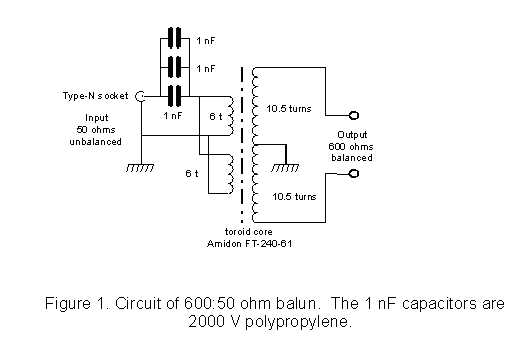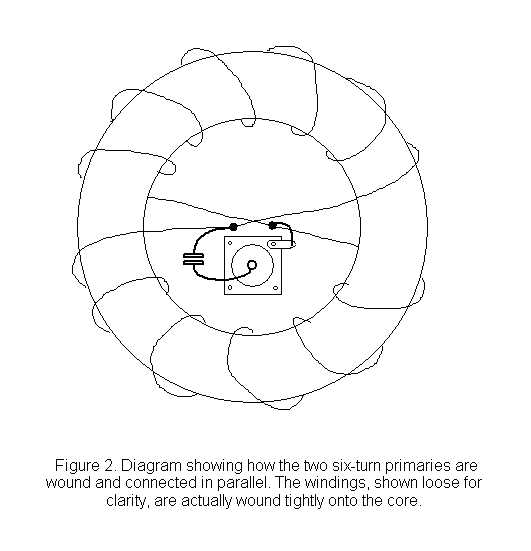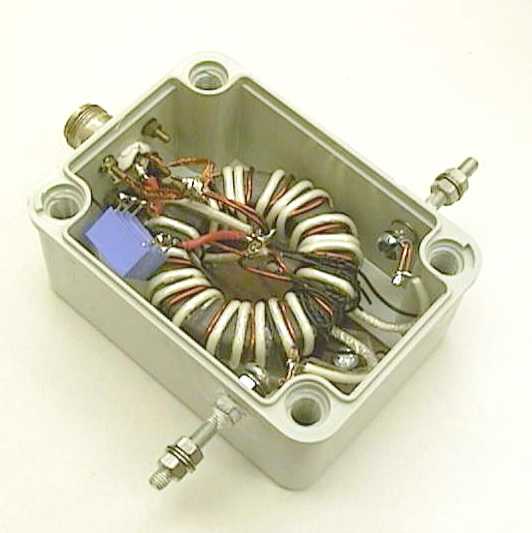

The secondary winding is 21 turns evenly spaced around the whole circumference of the toroid. The secondary is tapped at the centre, with 10.5 turns on either side. The centre tap is connected to the earthed end of the primary at the outer of the type-N socket. The wire used for the secondary is critical. The commercial balun which was copied used quite fine stranded wire with PTFE insulation, but using similar wire for the larger balun gave a poor SWR above 20 MHz. Very good results were obtained when the PTFE insulated wire was replaced with foam dielectric insulated stranded inner conductor stripped from 75 ohm, 4.5 mm external diameter coaxial cable. This cable was surplus and of unknown type, but is believed to be similar to UR202. The secondary is wound tightly over the primary, and held in place with nylon lacing cord. The inner from a similar sized 75 ohm cable with solid polythene dielectric would be more difficult wind tightly over the primary. The balun is housed in a plastic water-proof electrician's box, see photo. (Figure 3) The 600 ohm line terminals are stainless steel bolts.
The “reverse engineered” commercial balun was fitted with gas-filled spark gaps from each 600 ohm terminal to ground, but spark gaps were not used for the Quartz Hill baluns. It was reasoned that even with spark gaps, a balun would not survive a direct lightning strike on the antenna system. However, the earthed centre tap is most important as it discharges rain static, preventing insulation break-down. The capacitor in series with the primary, in addition enabling the number of turns to be reduced, provides a dc block in the primary circuit. This is very useful in diagnosing water leaks into the balun or cable connectors, using a 500 volt insulation tester at the building end of the cable.
The SWR over the frequency range 1.8 MHz to 30 MHz is shown in the graph. (Figure 4) Performance with the series capacitor short-circuited (top curve) is greatly improved when the capacitor is in-circuit (lower curve). In service, the baluns have been very reliable. The only failures have been due to inadvertent transmitting into the balun with one leg of a vee antenna on the ground after storm damage, and to ingress of moisture. The moisture problem has been solved by liberally coating the join between the box and the lid, and also the type-N connectors, with flexible F2 adhesive.

600:50 Ohm Balun
Senin, 15 Februari 2010
Diposting oleh antenaku di 18.12 0 komentar
Langganan:
Komentar (Atom)